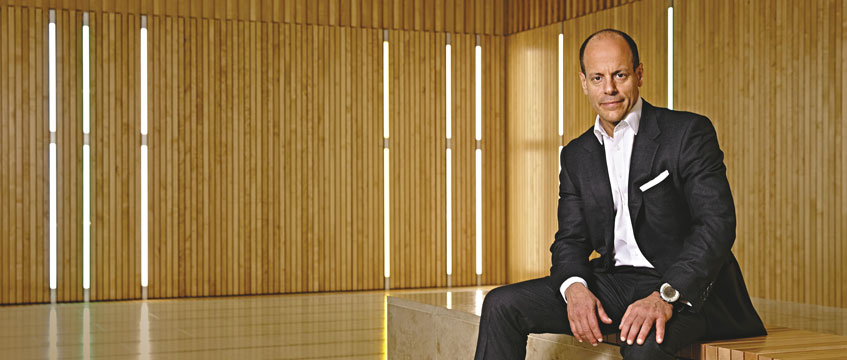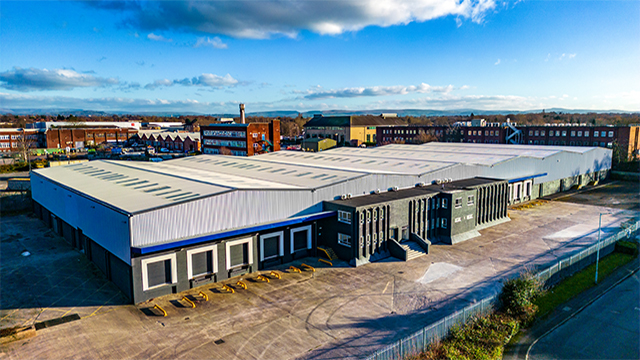The computer industry has traditionally been dominated by the likes of IBM and Digital, but they stand to lose out to a new breed of smaller operators and foreign competitors. Lauren Mills assesses the property implications.
When IBM announced its record losses of £3.3bn recently, the property industry that has prospered from the computer giant rightly shuddered.
But although IBM received the most publicity, it is not the only large IT company in trouble. Digital is also experiencing difficulties, and Wang has filed for bankruptcy protection.
These companies, heavily dependant on minicomputer and mainframe sales, will continue to lose money and market share while the current preference for personal computers and innovative software packages continues.
Director of research at Debenham Tewson & Chinnocks, Peter Evans, says: “The computer sector in the UK has entered its worst-performing phase in history. In 1990 and 1991 sales across the sector fell by 3%-4% pa, which contrasts with real growth rates of 10%-15% during the second half of the 1980s.”
While the sector as a whole is under pressure, huge discrepancies are emerging between the relative performance of hardware/mainframe sales and software/maintenance packages.
Global mainframe sales fell by 16% last year, to $22.5bn, according to the research house Dataquest, but PC sales are continuing to grow, which implies parallel growth in the software market.
“The segmentation between hardware and software/services will continue to shape the likely pattern of growth of individual companies in the near future,” says Evans.
“Most of the forecasts available point to a 5%-10% decline in sales of mainframes and midrange computers during 1993-94. However, further growth of 5%-10% per year is expected in data communication systems, software and maintenance services.”
IBM’s predicament accounted for much of the decrease in the mainframe sector. Its market share has dropped from 37% in 1975 to 19% in 1991.
Portsmouth and Greenock stand to bear the brunt of IBM’s decline. At Northern Road, Portsmouth, next to the firm’s headquarters, Steve Connor, IBM’s strategy implementation manager says that “100,000 sq ft will be surplus by the middle of the year”.
IBM currently occupies 3.5m sq ft of office and warehouse space in the UK, but floorspace reductions are likely to gain pace as further redundancies come on stream.
About 4,000 staff have gone since 1986 and up to 5,000 more could face the axe. IBM estimates that a total of 1m sq ft will have been vacated by the end of this year.
Brian Moriarty, IBM’s real estate development manager, says that the company is following a policy of consolidation on to its main sites, meaning that a glut of poor quality, secondhand accommodation will flood onto the market in areas that are already struggling, such as Portsmouth.
But the company has recognised the need to change the emphasis of its business so that it can fight back against growing competition from smaller, more flexible companies.
Its policy is to expand the software and services side and funds will be reallocated accordingly. This may result in the company splitting into autonomous units.
“It is possible that the holding will be split in the future, but, for the time being, we are continuing to consolidate on to our main sites,”says Moriarty.
But he admits that a strategy is being devised: “We are looking at the possibilities, but no sites are earmarked as yet.”
Whatever happens, IBM is unlikely to move its national marketing centre from New Square, Bedfont Lakes, which it developed jointly with MEPC.
It is paying in excess of the quoting rent of £24 per sq ft for a leaseback on 186,000 sq ft, a deal that was agreed in the late 1980s.
Moriarty admits that the rent is high, but to justify the decision he says: “You always have to pay for a good product.”
Computer companies have traditionally gone for the best, preferring such sought-after locations as the M4 corridor.
“It’s a nice area close to Heathrow and computer companies could afford the rents there in boom times,” says John Lamb, editor of Computer Weekly.
But it is not the only location that attracts the computer firms. At Arlington’s Birmingham Business Park, the likes of Wang, Sema, Apricot and Hewlett Packard have all taken space.
John MacLeod, of Strutt & Parker, joint agent with Grimley J R Eve, claims that they have been attracted to the park “for good business reasons”. Apricot says that its client contact rate has increased by 100% since coming to the park.
Hewlett Packard, which has taken 13,750 sq ft, is one of the newest recruits and rents are around the £18 per sq ft mark.
MacLeod contends that the computer sector is prepared to pay a bit more to get the benefits of the business park location, although he adds: “Traditionally, they always ask for break clauses, but we have resisted so far.”
But computer companies can no longer be relied on to pay over the odds, even when the product is right.
PC company Compaq agreed to pay £21 per sq ft for its 80,000-sq ft headquarters at Richmond Riverside three years ago, but would almost certainly exercise more caution in today’s market.
“They were prepared to pay a bit more for the right building – but that was three years ago, the situation is very different now,” says Paul Guyer of Fletcher King, Compaq’s retained agent.
He believes that Riverside was chosen because of its location to the west of London and close to Heathrow. It also portrays the right “upmarket image” for the company.
Guyer is convinced that Compaq would pay more attention to car parking and accessibility now, together with cost considerations. But the company has no plans to relocate as yet.
“Compaq is not looking to expand its property holding and, because of improvements in technology, it doesn’t need as much space,” says Guyer.
This seems to be the case across the board, with companies experimenting with space-sharing initiatives so that employees share workstations as and when they need them.
With property costs accounting for about 6% of overheads, this can result in considerable cost reductions for large space users such as ICL, which occupies about 3m sq ft.
The company has been established in this country since the 1920s, with most of its property concentrated in the Thames Valley, Staffordshire and Manchester.
“We have had an ongoing programme to improve our stock over the past 10 years,” says a company spokesman. “The emphasis now is for out-of-town, campus-style property – because image is very important.”
ICL rarely takes speculative space, because existing buildings often need upgrading to meet the company’s criteria.
“It’s a big investment and we want to get it right. Cost is a factor, but it is not the be all and end all – needs dictate.”
Although ICL has plans to expand in the future, at present it is taking stock and major changes to its current holding are unlikely.
Sizeable moves are unlikely to be generated by the computer sector in the foreseeable future, and David Williams of Savills expects the majority of take-up to be for units of 5,000 sq ft to 15,000 sq ft. He claims that with the likes of IBM and Wang going through a difficult patch, ex-employees will be looking to set up small businesses, selling niche products or computer training services.
“I think the area of search will be concentrated on the M4 – Heathrow, Bracknell and Maidenhead. New accommodation is available at exceptional prices, together with complete flexibility on break clauses,” says Williams.
Microsoft, bucking the trend in terms of the size of its requirement, has recently taken 64,000 sq ft at Building 210, Winnersh Triangle, close to Reading. But it is rumoured to be paying a rent equating to only £9.75 per sq ft, with the added bonus of break clauses which have been included in the 25-year lease.
Williams remains convinced that the majority of movement will be generated by small companies.
Management consultant, McKinsey & Co agrees. Its 1992 report on the computer industry estimates that the top 10 companies will only account for 45% of the market by the year 2000, a fall of 20% since 1975.
Small companies, on the other hand, should see their market share increase from 3% in 1975 to 30% in 2000.
McKinsey & Co believes that opportunities for the future are particularly strong for architectural leaders, such as Microsoft with Windows, or Sun, and for innovative followers like Dell and Amdahl.
Although margins have been squeezed and cost-cutting is rife, the PC sector still ranks as one of the world’s fastest growing businesses.
Microsoft, which overtook IBM in terms of stock market value last month, did not even exist 20 years ago and many of the industry’s major players have seen a meteoric rise in a few short years from employing a handful of staff to being multi-million-pound companies. Competition is also likely to come from abroad and it would pay for agents and developers to keep an eye on foreign-based firms, like Acer from Taiwan and Samsung from Korea.










